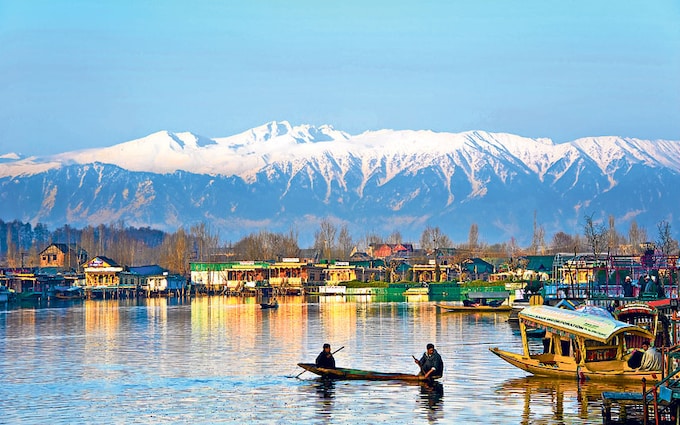Overview
Located in the heart of Nepal’s largest nature reserve, the enormous Annapurna Massif rises around it.
Climbing the 10th highest mountain in the world, he said, is a physically and technically demanding feat, but it’s not the only way to experience the region’s breathtaking beauty.
The Annapurna Conservation Area hosts about six of Nepal’s most popular treks. This Annapurna Nature Reserve is visited by the third of the trekkers who visit the country each year.
About the Annapurna Trek
Among these treks, the most popular is the Annapurna Base Camp (ABC) trek. This trek allows visitors to explore the country’s sublime natural beauty, meet locals, experience a unique culture, and see the country’s iconic plants and animals.
Visiting ABC should be at the top of every trekker’s to-do list, but before buying a plane ticket and flying to Kathmandu, it’s important to know what to expect. Below, we’ve listed everything you need to know before embarking on the adventure of a lifetime.
Annapurna Base Camp – Where is it?
Annapurna Base Camp (latitude 28°31’48” N, longitude 83°52’40.8″E) is located in north-central Nepal, in the heart of the Himalayas.
More specifically, it is located in the glacial basin of the Annapurna Conservation Area, south of the massif, about 40 kilometers (25 miles) north of Pokhara and 170 kilometers (105 miles) northwest of Kathmandu.
Annapurna Base Camp is approximately 4,130 meters (13,550 feet) above sea level, approximately 1,250 meters (4,100 feet) lower than Everest Base Camp.
The average Annapurna Base Camp trek covers about 110 kilometers (70 miles) and takes 14 days. However, some guides offer shortened versions that only last a week.
His standard 2-week itinerary usually includes his 10-day trek from Nayapul to the base camp and back, and his first and last two days dedicated to taking trekkers from Kathmandu to Pokhara and back. included.
When is the ideal time to trek to Annapurna Base Camp?
October is the most popular month for the Annapurna Base Camp Trek.
September to November is the most popular month for hiking as the weather is generally the clearest during this period. As a result, the area is usually fairly busy.
Autumn temperatures average around 15ºC (60ºF), decreasing with altitude.
Trekkers who want to avoid the crowds often choose to go to ABC in winter or spring. As expected, winter is the coldest time to do the trek and risks being interrupted by snowstorms. But far fewer people stay in nature reserves.
Spring is considered the best time to visit, when the flowers begin to bloom and temperatures rise to around 17ºC (63ºF). However, this is also the cloudiest time of the year in the Himalayas, which can obscure the views.
How difficult is the Annapurna Base Camp Trek?
The Annapurna Base Camp Trek is considered a moderate trek but does not require any technical climbing skills.
An average day consists of 4-6 hours of walking. Some days it takes only 3 hours, other days it takes up to 7 hours. However, there is a big difference at about 8,500 feet (2,600 meters) from the start of the hike to ABC. Nonetheless, any healthy person can complete the hike without prior knowledge.
What is the standard route for Annapurna Base Camp Trek?
Below is a standard 14-day itinerary for trekking to Annapurna Base Camp. Please note that there are some variations on the hike. However, these are usually on the 5th day he converges in Chomrong, from where he takes the same route to ABC. If he cannot use the full 14 days to complete the itinerary, the standard 7-day alternative is the trek from Nayapul to Gandruk.
From Ghandruk to Chomrong via Sinuwa. Chomrong to Deurali, Deurali to ABC. The return trip is the same as days 9 to 11 of the above itinerary. What to see in Annapurna Base Camp Trek?
ABC Trek is widely known as one of the most beautiful treks in the world. The adventure begins on a terraced slope and passes through picturesque villages.
The Experience
- Along the way, trekkers will have the opportunity to meet locals and learn about their history and culture. This is especially true when staying at a local teahouse. However, there are also camping options for a more immersive nature experience.
- One of the highlights of the hike is the ascent of Poon Hill. It is a hill with an elevation of 3,210 meters (10,531 feet), west of Ghorepani.
- Most ABC treks involve climbing hills before dawn to watch the Himalayan sunrise. Sublime is an overused word, especially in adventure tourism slang, but witnessing the sunrise over the top of Poon Hill is a truly sublime experience.
- After leaving Ghorepani and Poon his hill, the trekkers continue their adventure by trekking through a dense rhododendron forest. In spring, these beautiful trees bloom with purple and red flowers.
- As the trekker steadily gains altitude as he approaches the Annapurna Base his camp, there are many opportunities to stop at scenic views and enjoy close-up views of Dhaulagiri, Machhapuchhre, and, of course, the Annapurna Massif.
- Annapurna After arriving at his sanctuary and experiencing a bit of life in his base camp (no climbing), the return to civilization begins.
- The final major highlight of the trip is Zindanda. After a long day of trekking, trekkers can bathe in the area’s natural hot springs and reminisce about their journey before returning to the trailhead and returning to Pokhara.




